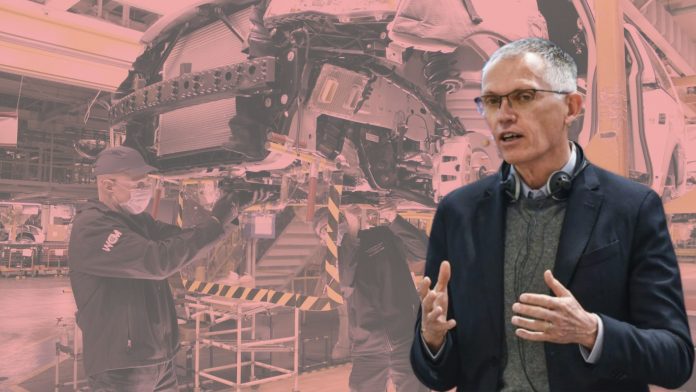Stellantis is offering buyouts to U.S. salaried employees to cut costs after a significant drop in net income during the first half of the year. This move follows executive promises of making tough decisions to remain competitive.
The voluntary separation packages are available to non-union employees in the U.S. at the vice president level and below across “certain functions.” Unlike previous offers, there are no minimum years of service requirements. Eligible employees will receive emails in mid-August detailing their individualized offers, which include an “enhanced benefits package not previously available.” Stellantis has not specified which functions will be targeted or how many of its 11,000 U.S. salaried employees will receive offers.
However, the automaker reported a 48% drop in earnings, with a net income of $6.1 billion for the first half of the year on net revenues of $92.2 billion, a 14% decline from the previous year. Lower vehicle sales and product mix challenges contributed to these declines. CEO Carlos Tavares emphasized the need for cuts, potentially eliminating vehicle brands.
The memo from Tobin Williams, senior VP for human resources and transformation in North America, stated that the goal is to achieve headcount reductions through attrition and buyout offers, but involuntary layoffs may follow if necessary.
To address inflationary pressures and provide consumers with affordable, high-quality vehicles, Stellantis is focused on cost reduction. The buyout packages include months of severance based on years of service, starting at two months for those with less than four years of experience and up to 13 months for those with more than 20 years. Additional benefits include:
- A lump sum for healthcare costs.
- Vesting of 401(k) contributions.
- Three months of outplacement services from Lee Hecht Harrison.
Stellantis has faced challenges such as bloated vehicle inventories and gaps in its lineup, contributing to a 21% drop in U.S. sales in the second quarter. Dealers have cited high sticker prices, insufficient incentives, older stock, and marketing issues. Paul Waatti, director of industry analysis at AutoPacific, noted that significant cost-cutting is necessary for the company to get back on track.
The automaker has been burdened by high research and development expenses, operational issues at factories, and ineffective marketing strategies. Tavares, known for his expense reduction and turnaround abilities, indicated that more cost-saving actions are planned for the latter half of 2024, with expected decreases of around $550 million in the first six months.
New leadership and a shift in strategy have created growing pains within Stellantis, impacting employee morale. Cost savings could help offset price reductions on Stellantis vehicles, which, on average, sold for $57,569 in the U.S.—18% higher than the industry average.
Despite challenges, the return of middle-income buyers to the market offers growth opportunities for Stellantis and its competitors. Stellantis is launching over 20 new products globally this year, including electrified Ram 1500 pickups, electric Jeep SUVs, and new gas and electric versions of the Dodge Charger. The compact Jeep Cherokee will return next year, and a $25,000 small electric Jeep SUV is expected in 2026.
Stellantis’ rivals have recently delayed EV product launches and investments due to slowing EV sales growth. Analyst Daniel Ives from Wedbush Securities emphasized the need for Stellantis to address its cost structure and invest in EVs and new technologies to stay competitive, especially in China.
Nevertheless, Stellantis has regularly offered buyouts to salaried workers, including two rounds last year. In a new contract with the United Auto Workers, the company also agreed to provide $50,000 retirement incentive plans for hourly workers in 2024 and 2026.




